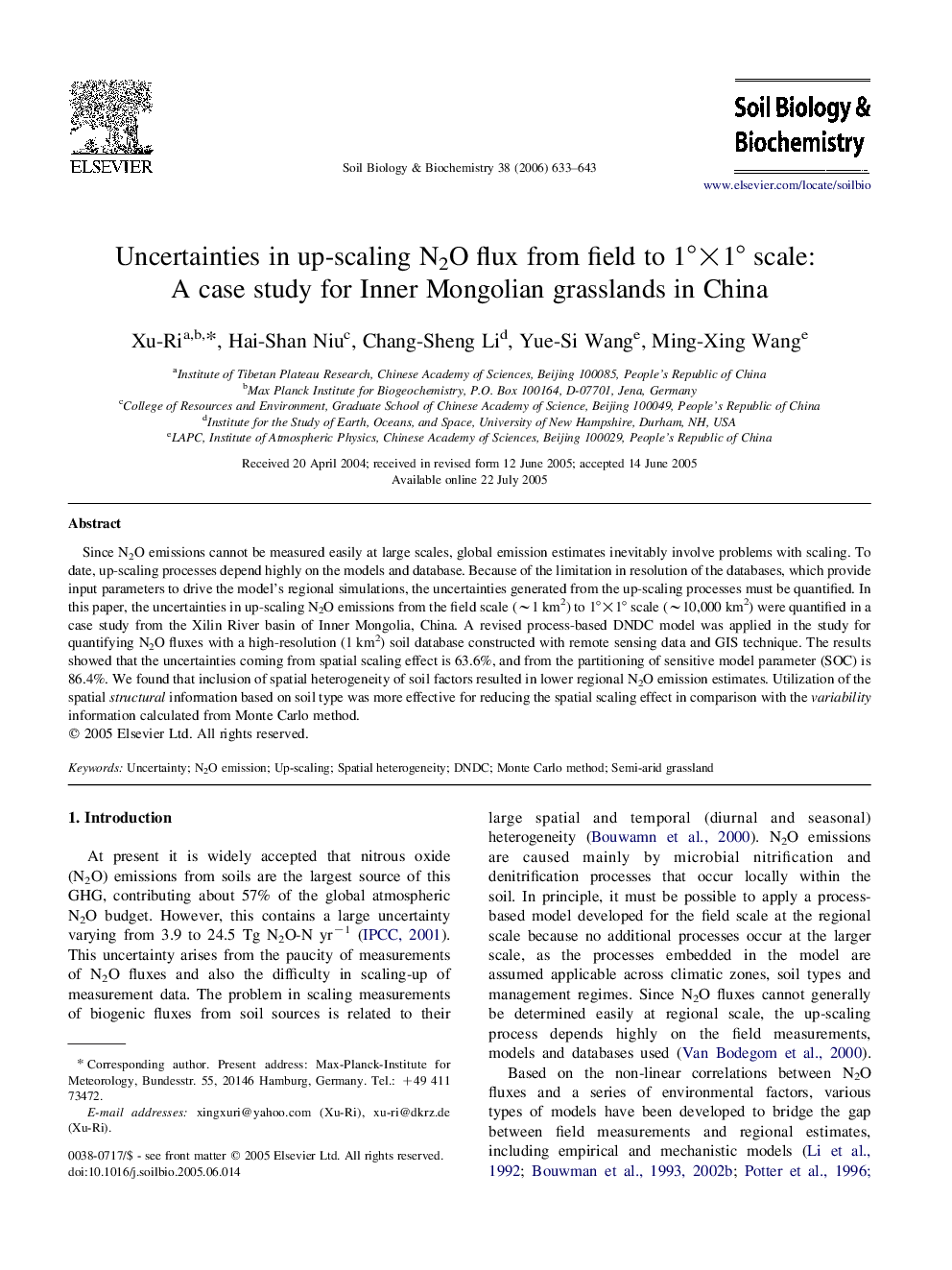| Article ID | Journal | Published Year | Pages | File Type |
|---|---|---|---|---|
| 2026610 | Soil Biology and Biochemistry | 2006 | 11 Pages |
Since N2O emissions cannot be measured easily at large scales, global emission estimates inevitably involve problems with scaling. To date, up-scaling processes depend highly on the models and database. Because of the limitation in resolution of the databases, which provide input parameters to drive the model's regional simulations, the uncertainties generated from the up-scaling processes must be quantified. In this paper, the uncertainties in up-scaling N2O emissions from the field scale (∼1 km2) to 1°×1° scale (∼10,000 km2) were quantified in a case study from the Xilin River basin of Inner Mongolia, China. A revised process-based DNDC model was applied in the study for quantifying N2O fluxes with a high-resolution (1 km2) soil database constructed with remote sensing data and GIS technique. The results showed that the uncertainties coming from spatial scaling effect is 63.6%, and from the partitioning of sensitive model parameter (SOC) is 86.4%. We found that inclusion of spatial heterogeneity of soil factors resulted in lower regional N2O emission estimates. Utilization of the spatial structural information based on soil type was more effective for reducing the spatial scaling effect in comparison with the variability information calculated from Monte Carlo method.
